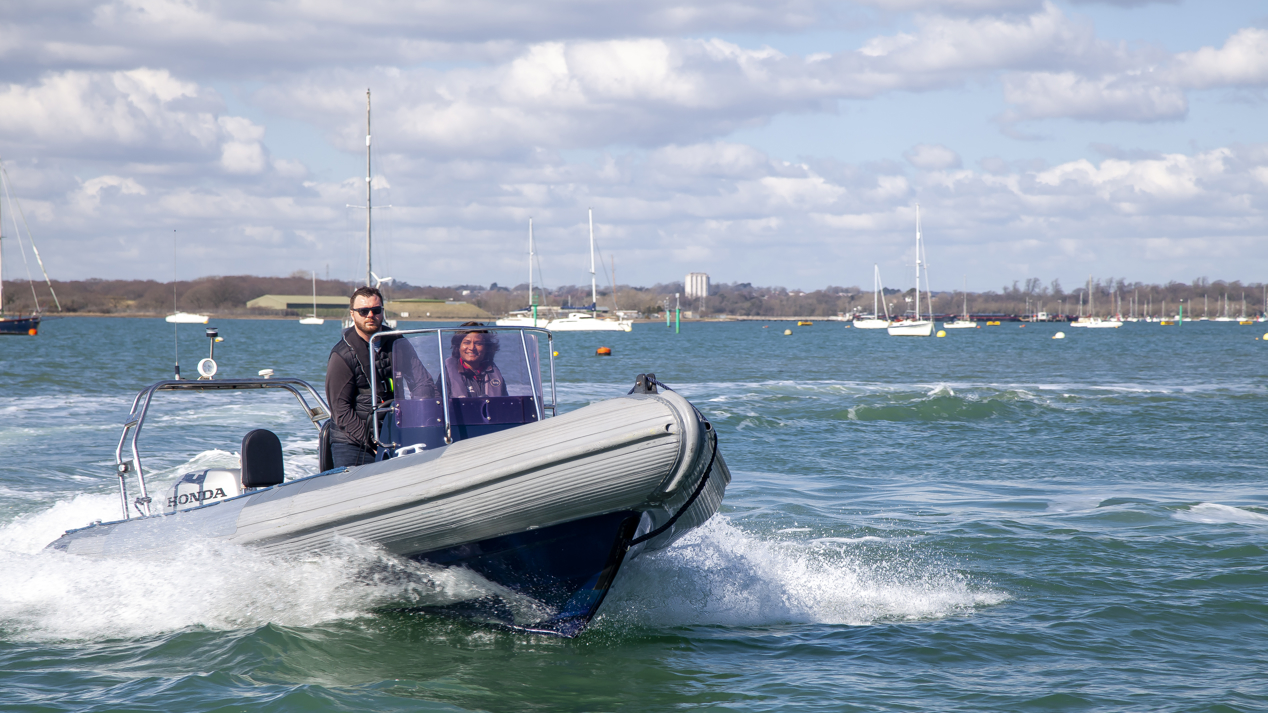Night cruising tips
Heading out on the water at night? Here are our top tips for stress-free cruising as the days get shorter and the evenings get longer
Being out on the water at night can have its advantages. It’s usually quieter with fewer vessels around and looking up at the heavens on a clear night without light pollution can offer a spectacular view. However, there are some things to consider so you and your crew prepare for a safe night cruise or sailing from dawn to dusk.
Plan your route
Familiarise yourself well with your chosen route and select waypoints along the way that will be easily identifiable in the dark. Many GPS/chart plotters now have a night mode option which allows you to navigate your route safely without dazzling your eyes. If you’re using a paper chart, you can also purchase overhead and chart lights, which produce a red light to preserve your night vision.
It is important to be able identify any specific lights that a vessel may show under the COLREGs, particularly those that require special attention such as restricted manoeuvrability or being constrained by their draft. Equally, it is important to understand any local by-laws giving shipping higher priority. In such situation it is best to sail defensively to avoid any suggestion of a risk of collision developing between you and large shipping.
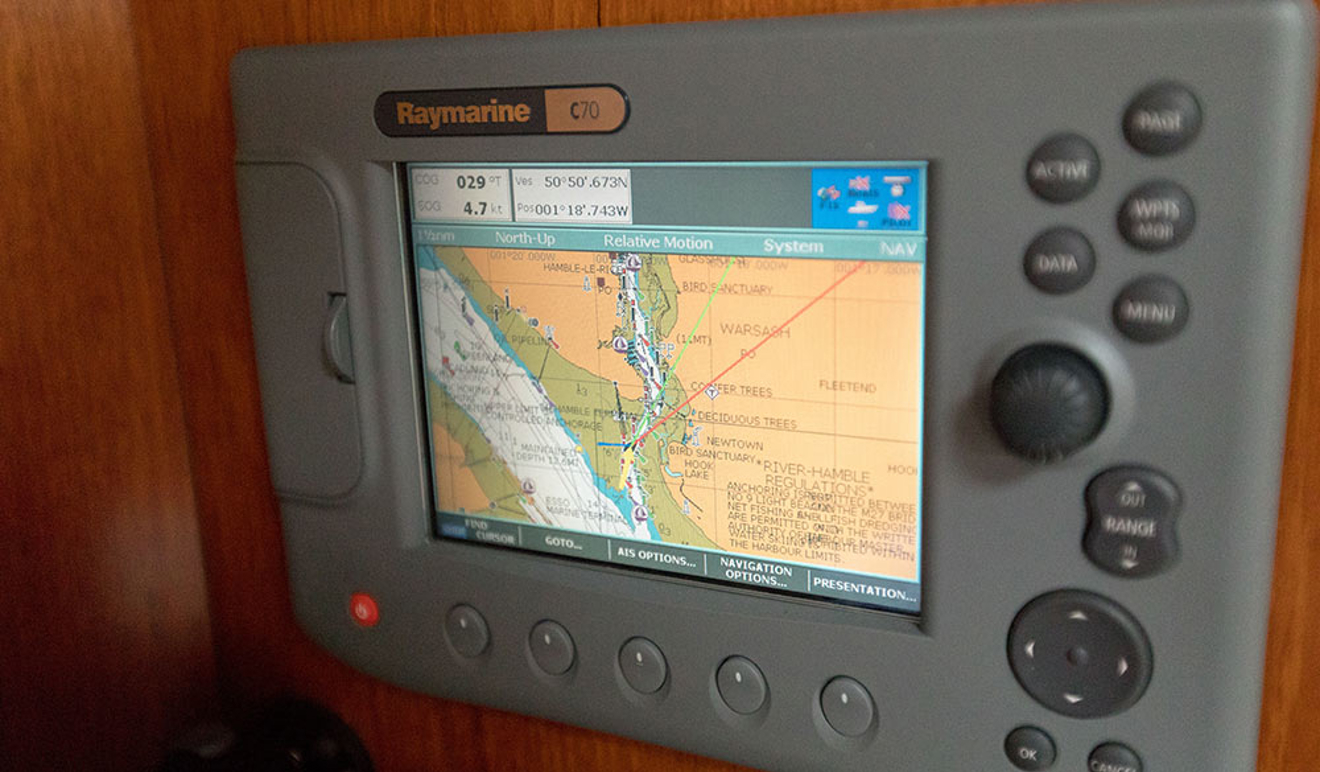
Know your lights
When cruising at night your boat must be fitted with the correct navigation lights that comply with COLREGs (The International Regulations for Preventing Collisions at Sea). This will depend on whether you are motor cruising or sailing and the length of you boat.
This is important as the navigation lights you display will tell others what type of craft you are and which way you’re heading. The rules mandate the exact colour of the lights, minimum distance each light must be visible, the arc over which it must be seen, and the position of the vessel.
Today modern LED lights are becoming increasingly common and use far less power, this is an important consideration particularly on a sailing boat. If you’re still using incandescent lights then it is wise to carry spare bulbs of the correct wattage on-board, and other electrical spares such as fuses. It’s also prudent to carry an emergency alternative to your fixed navigation lights in case they should fail.
It's useful to have several large and reliable torches available on-board not only in case the power fails, but to warn off ships that might not have seen you.
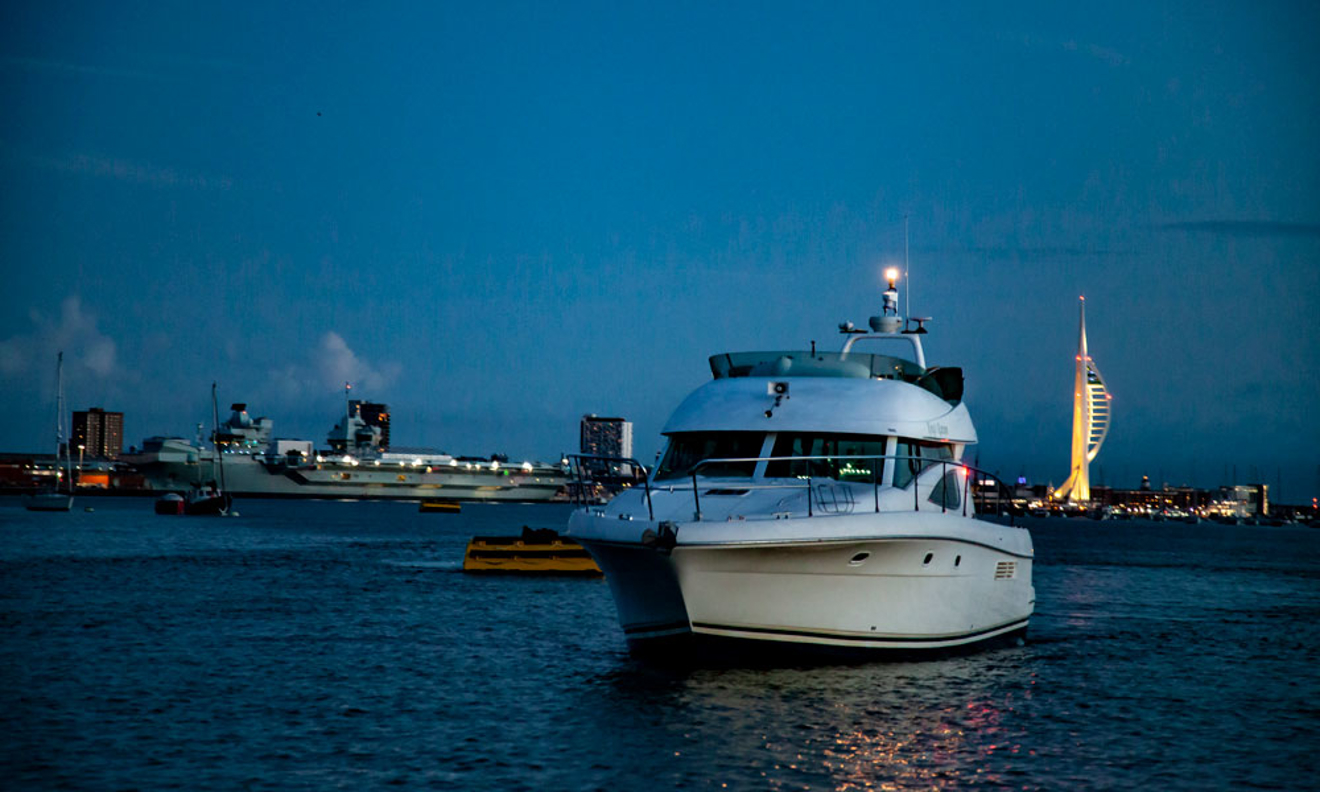
Night vision
Being able to see well at night is important for both your convenience and safety. It takes our eyes around 10 - 15 minutes to adjust to their best level of performance in the dark.
Caution must be exercised with white light on deck. If you choose to wear a head torch, you should consider that each time you turn to face someone the light will shine straight in their face. If this is white light, their eyes will have to start from scratch to readjust to the dark.
Switching on deck lights should be avoided and torches/head torches should have a red light wherever possible. Keeping the brightness on any electronic equipment low will mean your eyes won’t have to adjust as much. It’s worth remembering that ordinary binoculars are a very useful for improving your vision at night.
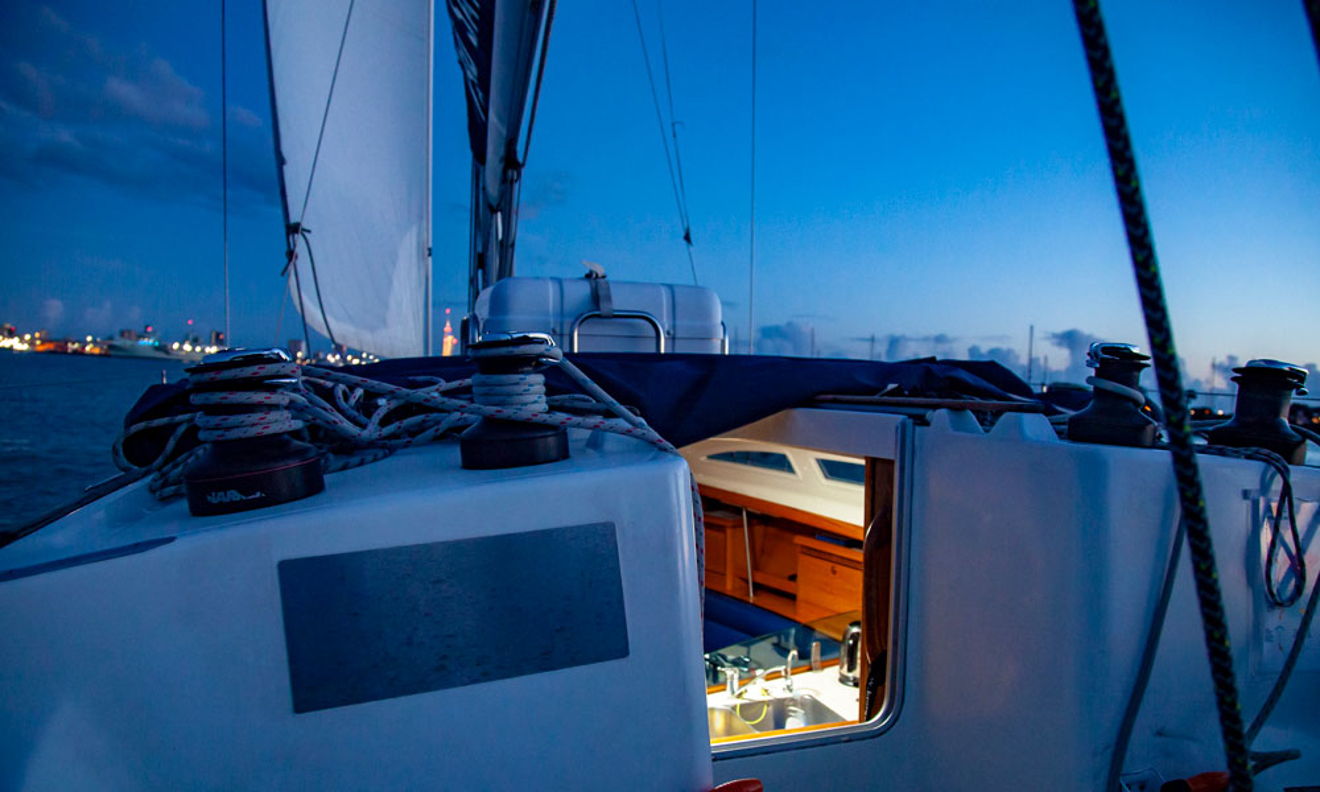
Keep watch
In general, when at sea overnight, a watch system should be set up. This ensures that someone is nominated for the helm and an adequate look out is kept, giving all the crew sufficient rest time.
If you’re intending to undertake a longer passage, watch systems cover more than just who is at the helm. They should include keeping the log, making the dinner, washing the dishes, daily checks, and maintenance.
Depending on the number of crew and their levels of experience, the skipper may or may not opt to be included in the watches. Even if the skipper is technically “off watch” the crew should be encouraged to wake the skipper whenever they feel the need. The skipper should also ensure that the crew are clear about any circumstance to which they wish to be alerted.
Clothing and food
Remember to prepare yourself and your crew with appropriate clothing for the trip and conditions. It always gets cooler at night, so layers of clothing and a spray jacket are essential kit.
Hot drinks and high energy snacks should be available, Thermos flasks are handy for a ready supply of hot water. A cold and uncomfortable crew can dampen everyone’s spirits and will affect everyone’s experience.
The skipper should check that everyone is fitted with a suitable lifejacket and know how to operate it should they need to.
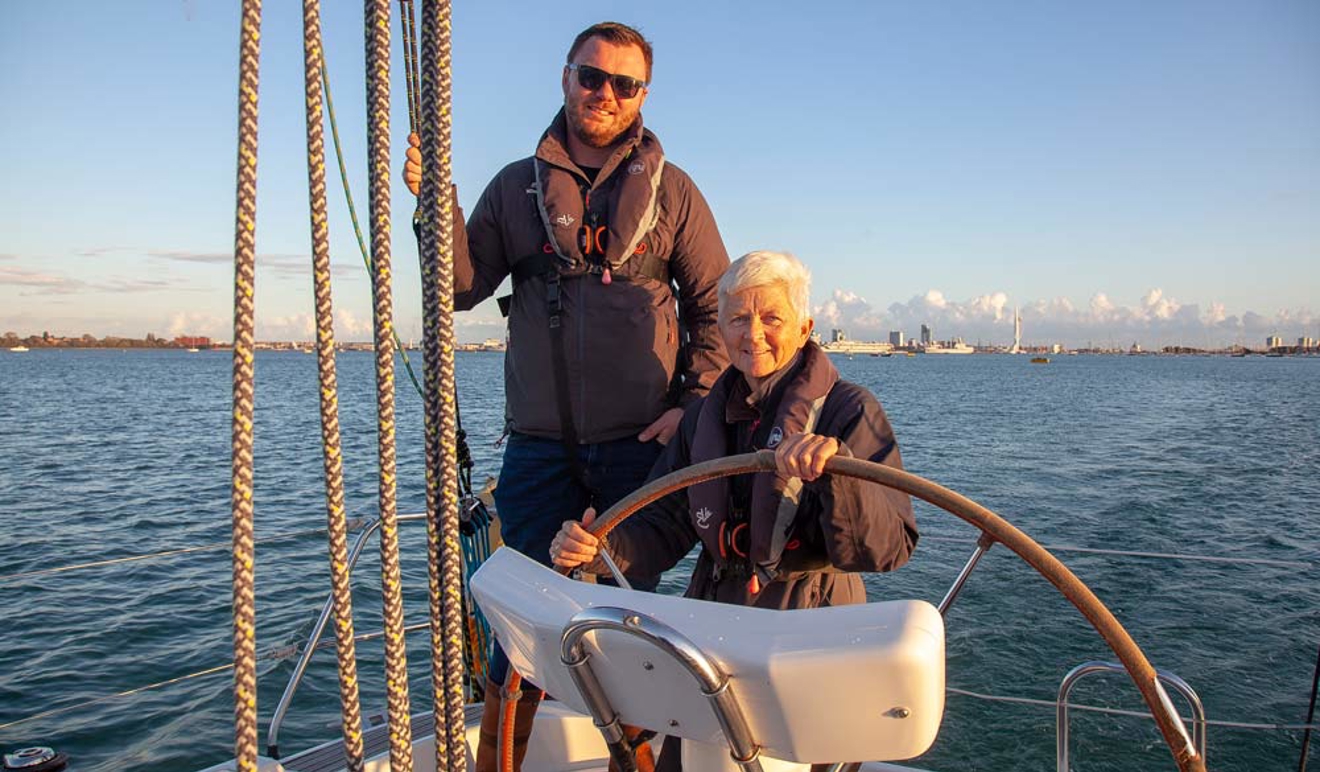
Clipping on
Keep yourself and your crew safe by using safety lines and clipping on. Remember that preventing the wearer from falling overboard is dependent on the length of the safety line and where it’s attached to on the boat. Safety lines can only work effectively if there are adequate attachment points on the boat. Ensure that your crew are aware of where clipping on points are located.
You can find more advice and tips for your next night cruising adventure on the RYA Safety hub.
Explore our safety hub
For more information about staying safe on the water visit the RYA Safety hub.
